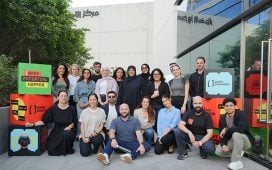
In an era where banking and entertainment are fully digital, it’s puzzling that some agencies still treat ‘digital’ like a quirky cousin at a family reunion—isolated and sidelined. Back in the early 2000s, when brands were cautiously entering the digital space, having specialised digital teams made sense. However, as consumer behaviour has evolved, this outdated separation is holding agencies back from meeting clients’ needs in a fast-paced environment.
Digital media entered the advertising scene as a novelty, leading agencies to form specialised teams focused on websites, banner ads, and early search engine marketing. But now, this distinction hinders agency efficiency. Integrating all channels into agency operations is crucial for streamlining processes and fostering collaboration. The days of viewing ‘digital’ and ‘traditional’ marketing as separate factions are long gone – it’s all just marketing magic! Embracing a unified approach is not merely a trend; it’s the future where all elements work together seamlessly.
As we dismantle digital silos, every channel and message becomes an essential part of the marketing ecosystem. The only thing that should be siloed is that dusty old trophy from the ‘Best Campaign of 2005’!
The problem with legacy thinking
The notion of digital as a separate unit is an outdated concept agencies need to discard. Alarmingly, 60 per cent of marketers still maintain distinct ‘digital’ teams, creating barriers that hinder cohesive strategies. This siloed approach is increasingly harmful, as 70 per cent of consumers seek consistent brand experiences across all platforms. Companies with integrated digital strategies are three times more likely to see significant performance improvements. Yet, over 75 per cent of marketers believe their organisations lack the agility to adapt to rapid changes. In a landscape where 80 per cent of marketers agree that integrated marketing is essential for growth, the failure to provide holistic solutions jeopardises client satisfaction and leads to fragmented campaigns.
Consumers don’t differentiate between digital and traditional
The MENA population is rapidly adopting new content and messaging formats, influenced by cultural nuances and technology. Social commerce is thriving, with 67 per cent of UAE consumers shopping via social platforms, while 40 per cent of GCC users spend over an hour daily on short-form videos like TikTok and Instagram Reels. Voice search usage is increasing, with 43 per cent of people regularly using voice assistants, and 71 per cent of millennials favouring influencer recommendations over traditional ads. Augmented reality experiences also engage users, particularly in Saudi Arabia, where 47 per cent of Snapchat users explore products via AR.
Culturally localised content drives engagement, with 63 per cent preferring regionally tailored ads. Agencies that silo digital miss the bigger picture of consumer interactions across multiple touchpoints. An unintegrated campaign can feel disjointed, leading to reduced effectiveness.
Digital expertise should be nimble and everywhere
The old model’s flaw lies in assuming that digital expertise belongs to a single team. Today’s landscape requires digital fluency across all departments. Whether it’s programmatic media, TikTok’s fast-paced auction model or real-time optimisation, agility is crucial. Siloed digital expertise delays execution and misses immediate opportunities. Instead, digital should inform everything – from strategy to creative to media planning – fuelling decisions with real-time data. The rapid pace of platforms like TikTok demands instant responsiveness. An integrated approach eliminates bottlenecks, allowing agencies to keep up with trends and client expectations.
Clients deserve holistic solutions, not fragmented services
Clients today require comprehensive solutions, not fragmented services. For instance, a retail client with separate TV and social media campaigns risks missing amplification opportunities. Integrated campaigns are shown to be 31 per cent more effective at driving brand effectiveness compared to siloed efforts. When media and creative align across platforms, the synergy enhances efficiency and effectiveness, boosting ROI by up to 20 per cent. Unified measurement is equally critical; tracking TV and digital performance separately leads to disjointed insights. Integrated data reveals clearer optimisation paths, increasing overall campaign effectiveness by 35 per cent. Educating legacy clients on these benefits is vital for their evolution.
Cross-functional KPIs and teams are non-negotiable
If teams aren’t integrating business, creative and media KPIs, they are missing out. Brands and agencies must unite expertise from the outset – before a campaign even launches. Digital expertise should permeate every team, from account managers to creatives. This approach yields significant outcomes: companies that align cross-functional KPIs have seen a 20 per cent increase in revenue growth. Thus, dismantling silos isn’t just about efficiency; it’s about driving real business results.
In conclusion, treating digital as an isolated, specialised unit is outdated. In today’s hyper-connected world, clinging to this model is a fast track to irrelevance. In the MENA region, agencies should recognise that clients want seamless, integrated strategies reflecting how consumers navigate across platforms. The future belongs to those who dare to abandon silos, embrace total integration, and redefine possibilities. Stay rooted in the past or evolve and lead – there’s no in-between.
By Rasha Rteil, Managing Director, Hearts & Science MENA.









